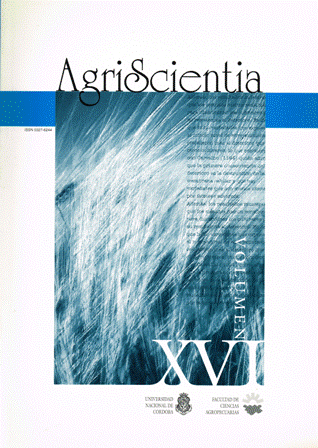Morphological evaluation of regrowth of onion plants (cv. Valcatorce INTA) for seed production.
Main Article Content
Abstract
During the past ten years, the cultivated area and production of onions (Allium cepa L. var. cepa) in Argentina have shown a constant increase, reaching 27,776 ha under cultivation with 699,360 t in 1998. The establishment of the crop can be done by sowing seed or planting bulbs. The first method is the most common for onion production, while the latter is recommended to maintain the pure genetic background of the cultivar for seed production. This paper describes the onion plant cycle to verify if it is possible to obtain two or more seed cycles from selected bulbs. The field experiment was conducted at the Experimental Station La Consulta (INTA), Dept. San Carlos (Mendoza), with four planting dates during 1994-1995 and 1995-1996. The potential regrowth of plants was analyzed by assessing both qualitatively and quantitatively the organs formed by the meristems remaining after flowering. An increased trend in bulb production was observed in the latest planting dates. The results showed that the cultivar Valcatorce INTA, depending on environmental conditions, can behave as biennial or perennial due to meristem regrowth, which develops new bulbs and seeds after the first flowering.
Article Details

This work is licensed under a Creative Commons Attribution-ShareAlike 4.0 International License.





